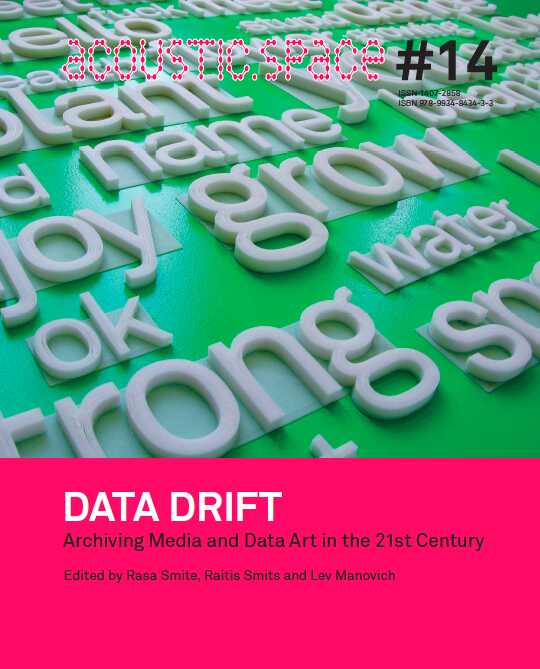These are very challenging questions which are only beginning to be thought about today. However, the parallel questions of selection, archiving and curating are important to address with regards to all media artforms – from early video, computer and telematic art to later networked, web-based, software, and data art. What exactly should we be preserving in the case of computer driven artworks? The description of the idea for the work of art? A plan of the exhibition scenography? Software code? Everything including the original equipment – even it doesn’t work any more?
Archiving strategies
There are several strategies already used in media art archiving practice today, such as time capsule, migration strategy, emulation, and reinterpretation. The later strategy is similar to how performing and theater arts deal with plays and scores. It enables a new interpretation every time the work is exhibited and also preserves the social context of the work. But it is also important to look for other possible approaches such as, for instance, data visualization that opens up new possibilities for archiving as well as reinterpreting and exhibiting artworks because it allows one to study a large number of artworks together. And when we bring many works together and compare them, we acquire the capacity to look at the past and present from other unfamiliar and novel perspectives.
DATA DRIFT
The DATA DRIFT book is edited by Rasa Smite, Lev Manovich and Raitis Smits. It combines a selection of papers presented in the Media Art Histories 2013 Renew conference held in Riga in 2013, and visual review of the Save As exhibition (2013). This volume also includes new texts and catalog section of Data Drift exhibition, as it is being published in connection with the Renewable Futures conference and Data Drift exhibition opening in Riga during October 8–10, 2015, in the framework of RIXC's annual festival that this year manifests "postmedia" situation by changing its title and focus – moving from the 1990s focus on network culture and "art+communication" ideas towards broader fields of art, science and cultural innovation.
All Acoustic Space Journals Rixc.org/en/acousticspace/
CONTENTS
- Introduction by editors – Rasa Smite, Raitis Smits and Lev Manovich
- Lev manovich. The science of culture? Cultural analytics, social computing and digital humanities
- Chapter i. Web archaeology and strategies for preserving net art
- Chapter ii. Archiving and documenting computer-based artworks
- Chapter iii. Moving images, video archives and issues of saving performing art
- Chapter iv. Media archaeological approach
Read
"The Reconstruction Of The Digital City, A Case Study Of Web Archaeology", by Tjarda de Haan and Paul Vogel.

